Not long after Christopher Columbus arrived in Cuba in 1492, the country became a Spanish colony. Following the Spanish-American war, Cuba became a protectorate of the USA, and today is an independent republic. Despite Cuba’s tumultuous political past, the country is a spectacular island to visit in the Caribbean. With incredible mountainous landscapes, thick forests and spectacular beaches leading to warm ocean waters, Cuba is filled with natural wonders. Havana, Cuba’s colourful capital, draws tourists into its culture with friendly restaurants and bars, and quirky art scene. So here are 20 natural, historical and famous landmarks in Cuba to tick off your bucket list.
20 Cuba Landmarks
Famous Landmarks in Cuba
1- Che Guevara Mausoleum
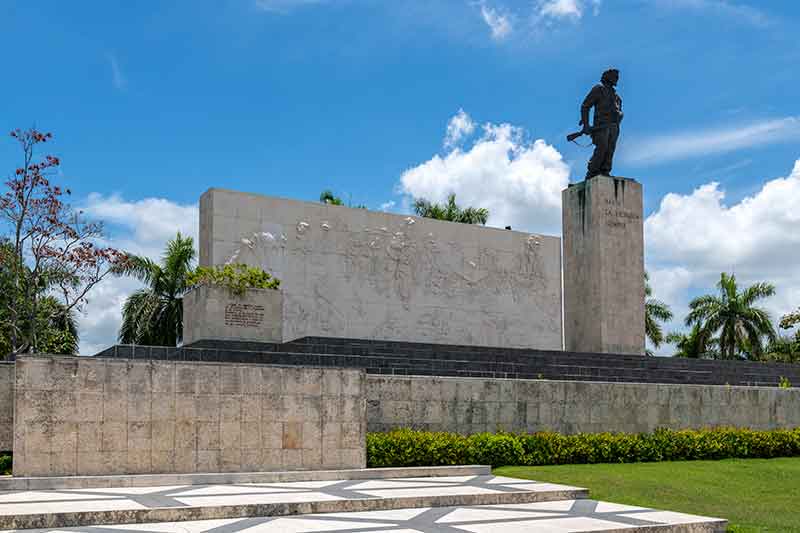
Santa Clara is where you will find one of the most famous landmarks in Cuba, the Che Guevara Mausoleum.
The mausoleum is perched on a hill overlooking the city and contains the remains of Che Guevara and other guerrilla fighters who died with him in Bolivia.
The mausoleum was constructed between 1982 and 1988 when it opened to the public.
Within the grounds is a memorial and statue, museum detailing the life of Che Guevara and a parade ground.
Guevara’s remains were not interred into the mausoleum until 1997.
When he was executed in 1967 by the Bolivian military, he was buried in an unmarked grave and was undiscovered until 1997.
Guevara and the 6 guerrilla fighters who were found in the mass grave with him were re-buried with full military honours underneath the memorial.
2- José Martí Memorial
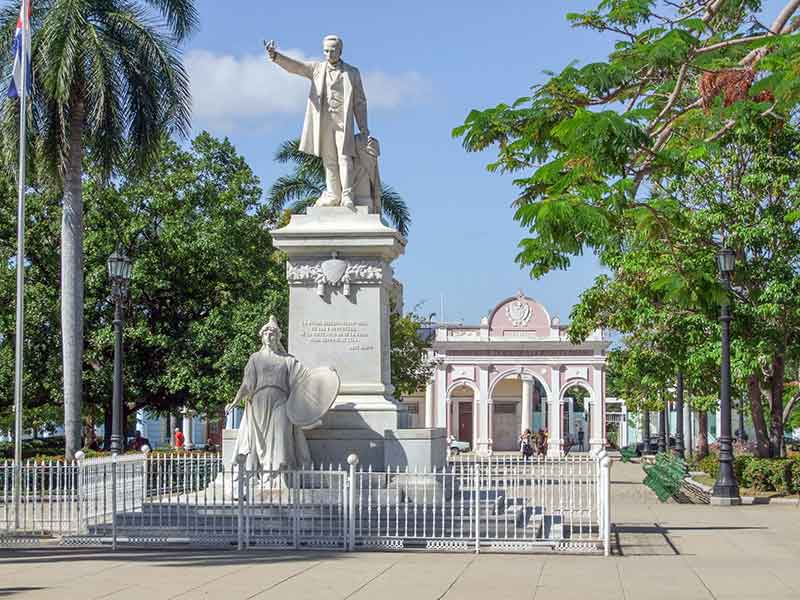
Standing in the centre of Plaza de la Revolución is the José Martí monument.
José Martí was a Cuban philosopher, writer and poet. He played a big role in fighting for independence from Spain in the late 1800s, giving his life in 1895 in battle for this cause.
The monument is 138.5 meters high, making it the tallest structure in Havana. In front of the monument is a 17 m high marble statue of José Martí, replicating the ‘Thinker’ pose.
Within the memorial is a museum on José Martí and his life works.
Quotes from Martí are carved into the steps, reflecting his desire for Cuba to be freed from colonial rule.
3- Finca Vigía
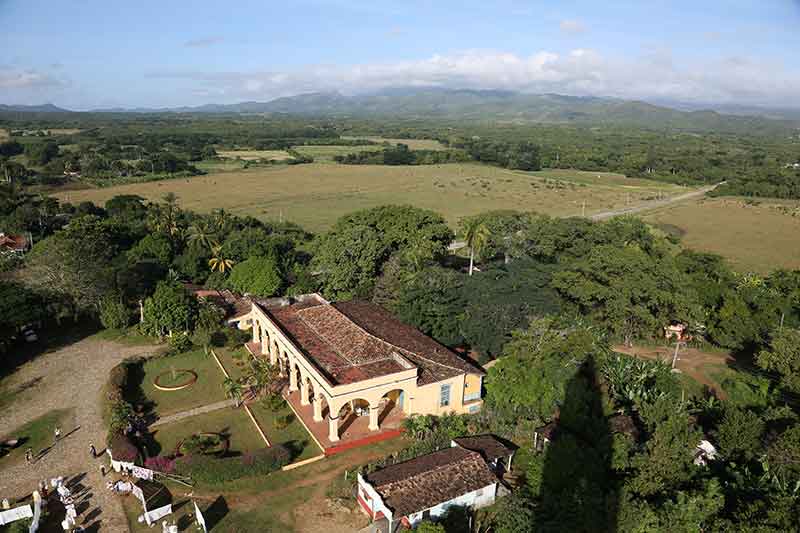
Translating to ‘lookout house’, Finca Vigía lies 10 miles east of Havana and was once the home of Ernest Hemingway.
The house was built in 1886 by a Spanish architect and Hemingway purchased the property in 1940.
During his time at Finca Vigía, Hemingway wrote some of his most famous books including ‘The Old Man and the Sea’ and ‘For Whom the Bell Tolls’.
Following his death in 1961, the house was taken by the government, but eventually, the property was made into a museum celebrating Hemingway’s works and life.
4- Cruz de la Parra
Cruz de la Parra translates to ‘The Sacred Cross of Parra’ and was erected by Christopher Columbus in Baracoa when he first landed on Cuba in 1492.
It is believed that out of the 29 crosses Columbus erected all over the New World where he landed, Cruz de la Parra is the only surviving one.
The cross is the oldest sign of Christianity in the Americas. Cuba offered the cross to Pope John Paul II during his visit to Cuba in 1998, but he declined to remove the cross from the island.
5- Callejón de Hamel
A narrow alleyway in Havana might not seem like a landmark, however, Callejón de Hamel is popular due to its incredible artwork.
The alley is filled with brightly coloured murals and sculptures from a range of artistic styles including surrealism and cubism.
The artworks are all by Cuban artist Salvador Gonzáles Escalona, a self-taught artist.
The street is now a popular hotspot for tourists, as well as rumba dancers, who even offer classes on Sunday afternoons for tourists and locals alike.
6- Soroa Orchid Garden
A welcome retreat of tranquillity and beauty, Soroa Orchid Garden is a must-visit landmark to see when in Cuba.
The gardens were created by Spaniard Tomás Felipe Camacho in 1943 to honour his daughter, who had sadly passed away.
The gardens house an extensive collection of orchids and other plants, totalling over 20,000 plants and 700 species.
Many of the orchids can be found in several greenhouses which makes for a spectacular sight when they are flowering.
The family home within the gardens is currently undergoing works to allow it to be converted into a museum which will house Camacho’s extensive library on plants and orchids.
7- Cristo de La Habana
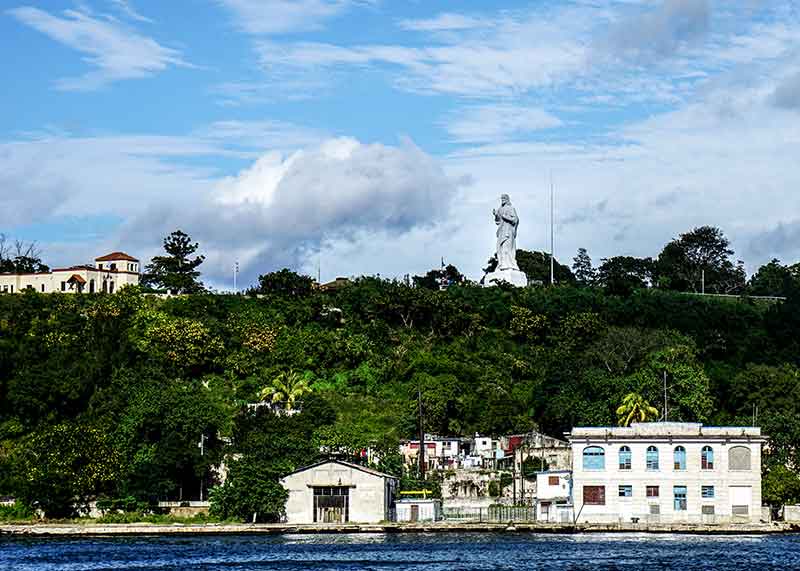
Cristo de La Habana, a colossal statue of Christ, lay forgotten underneath 30 years of vegetation until its re-discovery in the 1990s.
The statue was commissioned by Fulgencio Batista, who was president of Cuba during the 1950s.
He wanted the statue to be built to gain support for his causes and planned to unveil it shortly before Christmas.
Designed by Jilma Madera, a Cuban sculpture and carved from marble in Italy, the statue was blessed by Pope Pius XII before its inauguration.
Shortly after the statue was erected, Fidel Castro conquered Havana, and the land in which the statue stood fell under military control and was left to the mercy of nature for more than 30 years.
Today the statue stands proud in a beautiful park overlooking the harbour, with incredible views over the city from the hill.
More landmarks:
Also read:
- 20 USA Landmarks
- 23 Canada Landmarks
- 22 Ohio Landmarks
- 21 Arizona Landmarks
- 21 Minnesota Landmarks
- 21 Oregon Landmarks
- 21 Illinois Landmarks
- 21 Colorado Landmarks
- 21 Georgia Landmarks
- 21 Michigan Landmarks
- 23 Los Angeles Landmarks
- 21 Washington Landmarks
- 21 Maryland Landmarks
- 20 Manitoba Landmarks
- 20 Kansas Landmarks
- 21 New Mexico Landmarks
- 20 Idaho Landmarks
- 20 Montana Landmarks
- 20 Oklahoma Landmarks
- 21 Wisconsin Landmarks
- 20 Tennessee Landmarks
- 21 Iowa Landmarks
- 20 Alaska Landmarks
- 20 Miami Landmarks
- 21 West Virginia Landmarks
- 21 Kentucky Landmarks
- 20 Louisiana Landmarks
- 21 Arkansas Landmarks
- 20 Cincinnati Landmarks
- 20 San Antonio Landmarks
- 25 Indiana Landmarks
- 21 New York Landmarks
- 20 Texas Landmarks
- 21 Boston Landmarks
- 20 Florida Landmarks
- 20 Hawaii Landmarks
- 5 South Dakota Landmarks
- 21 Pennsylvania Landmarks
- 23 New Jersey Landmarks
- 21 Virginia Landmarks
- 21 North Carolina Landmarks
- 21 Utah Landmarks
- 21 Nevada Landmarks
- 20 Massachusetts Landmarks
- 20 Washington DC Landmarks
- 20 Vermont Landmarks
- 20 Nebraska Landmarks
- 20 North Dakota Landmarks
- 21 Missouri Landmarks
- 20 Rhode Island Landmarks
- 21 Maine Landmarks
- 21 Connecticut Landmarks
- 20 San Diego Landmarks
- 20 Landmarks In South Carolina
- 20 Mississippi Landmarks
- 20 Las Vegas Landmarks
- 20 Dallas Landmarks
- 20 Houston Landmarks
- 20 Seattle Landmarks
Natural Landmarks
8- Cueva de los Portales
Combining spectacular natural elements with important significance to Cuba’s history, Cueva de los Portales is a landmark not to be missed.
The cave is in the Sierra de la Güira and is a huge through-cave with the Rio Gaiguanabo flowing directly through it.
The cave gained notoriety during the Cuban Missile Crisis in 1962, as Che Guevara made it the headquarters for the Western Army for 45 days.
It acted not only as a headquarters, but also a dormitory, and remains furnished to this day.
9- Hoyo de Morlotte
Caused by water erosion, Hoyo de Morlotte is a sinkhole in the Granma Landing National Park.
The sinkhole is 77 m deep and 55 m wide and is the only sinkhole in Cuba that isn’t filled with water.
The sinkhole was discovered in 1938 by a French pilot, Morlotte, giving the sinkhole its name.
Within the sinkhole at its base is a small, shallow body of water and a small cave system filled with tiny crabs, fish and shrimp.
10- Salto Fino
The Salto Fino waterfall is the highest in the Caribbean at 305 m high.
The waterfall cascades eight times down this height into a pool of water below.
Located in the exotic region of Baracoa, the waterfall appears as a tiny stream from afar, before revealing itself through the jungle.
Salto Fino became famous in 1966 when Dr Antonio Núñez Jiménez discovered it and photographed the landscape.
11- Sierra Maestra
Sierra Maestra is a mountain range in Southeastern Cuba and stretches from Cape Cruz towards the Gulf of Guacanayabo.
The highest peak in the range is Turquino Peak which reaches 6476 feet above sea level.
The mountains are heavily wooded, with mahogany, cedar and ebony trees, as well as coffee plantations.
Within the range, many native animals can be found such as pygmy owls, tiny frogs and butterflies with invisible wings.
12- Hanabanilla Lake
Hanabanilla Lake in mountainous Escambray is actually a dam and is one of the largest in Cuba.
The lake provides water for the largest hydroelectric power plant in the country and its serene landscape makes it a must-visit natural Cuban landmark.
Hanabanilla is 192 square kilometres in size and has a depth of around 40 meters.
When visiting the lake, hire a boat to cruise over its waters, or hike one of the many trails leading too or from the water’s edge.
13- El Yunque
El Yunque is a 575 m high limestone mountain in Baracoa and hiking the mountain to its summit has long been a popular activity.
When hiking up the mountain, look out for Cuba’s national bird, the tocororo, and for the zunzúncito which is the worlds smallest bird.
The mountain became a national monument in 1979.
Hikes up the mountain do require a guide, however, tours are readily available with hikes to the summit and around the plantations and rainforest surrounding its base on offer.
14- El Nicho Waterfalls
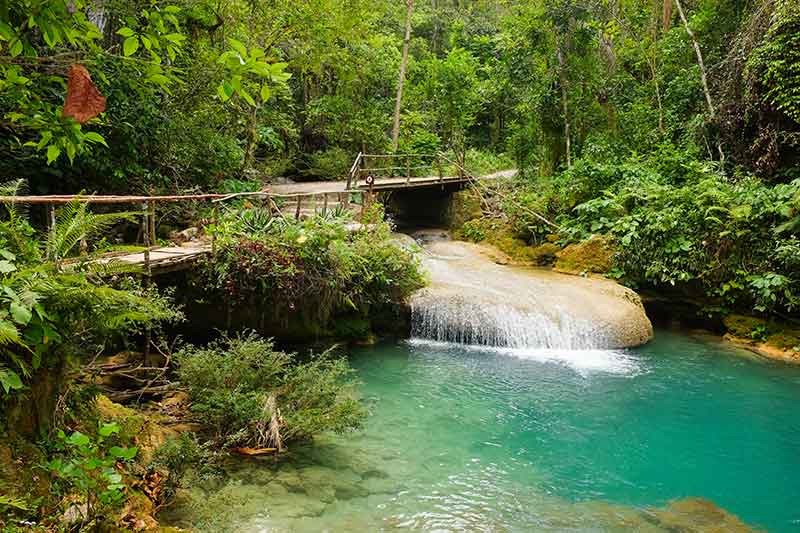
Located inside the Gran Parque Natural Topes de Collantes, El Nicho Waterfalls have long been a welcome natural break from the bustle of nearby cities Trinidad and Cienfuegos.
Best known for its large waterfall, El Nicho boasts tranquil pools at its base which are popular for wild swimming.
There are many other pools within the park ranging in size.
To reach the waterfalls and pools, take a short hike through the dense tropical landscape where local flora, fauna and wildlife can be seen.
Historic Landmarks in Cuba
15- Morro Castle
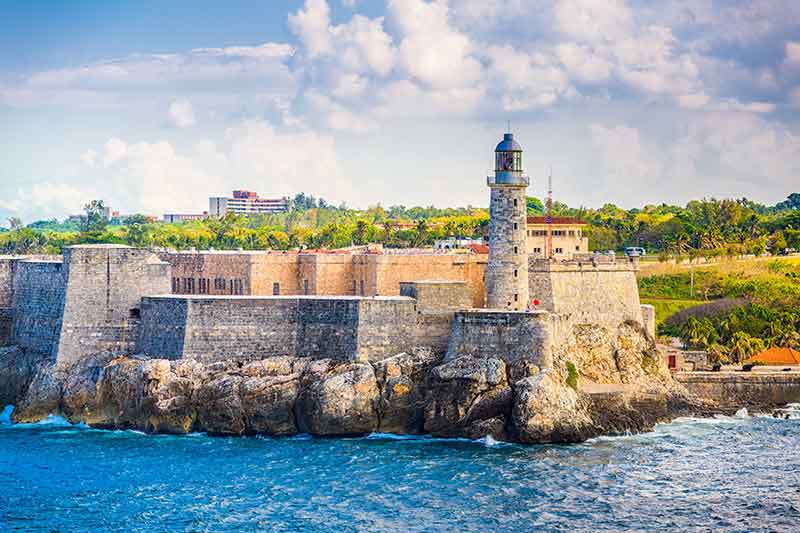
Known locally as El Morro, El Castillo de los Tres Reyes Magos del Morro is a colonial-era Spanish castle.
The castle was built from 1589 to 1630 in Old Havana as a line of defence against pirates and other potential colonists.
The castle’s shape replicates the cliff it sits atop of, giving it an unusual shape and structure.
It features a moat and lighthouse.
The castle had in its history proven to be a strong defensive point, however, the castle was captured during an attack by British forces in 1762.
16- El Capitolio
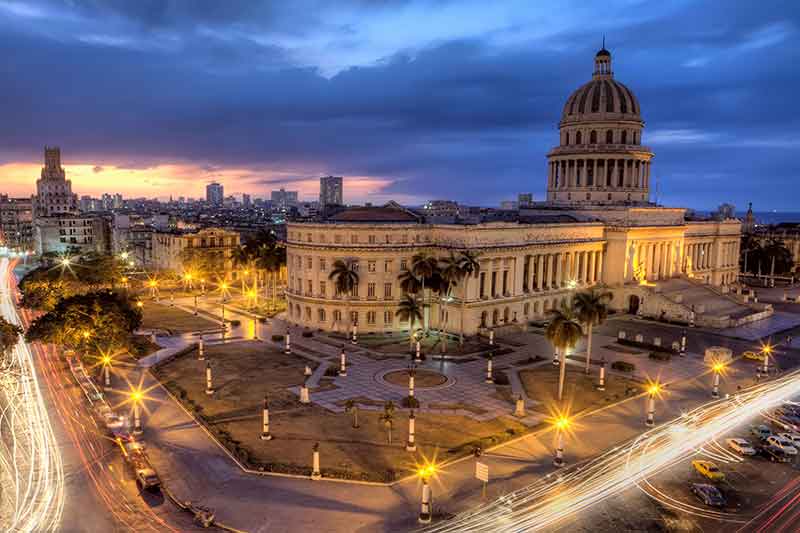
Built in 1920, El Capitolio is Havana’s capital building and the most photographed landmark in the Cuban capital.
Over the years, the building held several records including the title of Havana’s tallest structure, which it lost in the 1950s.
Its dome was also once the largest in the world.
The grounds of the building were designed by Jean-Claude Nicolas Forestier, a landscape architect who also landscaped the grounds surrounding the Eiffel Tower in Paris.
Within the building is the worlds third-largest indoor statue, which is of a woman cast in bronze representing a guardian of work and virtue.
17- Casa de Diego Velázquez
Casa de Diego Velázquez was the home of the first governor of Cuba, built in 1515, and is the oldest example of a colonial-era home in the country.
The house was designed in a Hispanic-Moorish style and features many balconies, geometric patterns and screens, and intricate tile-work.
It is believed that the builders of the house were also shipbuilders as many of the ceilings replicate the body of a ship.
Restored in the 1960s, this Cuban landmark building houses the Museum of Cuban Historic Ambience.
18- Cathedral of Havana
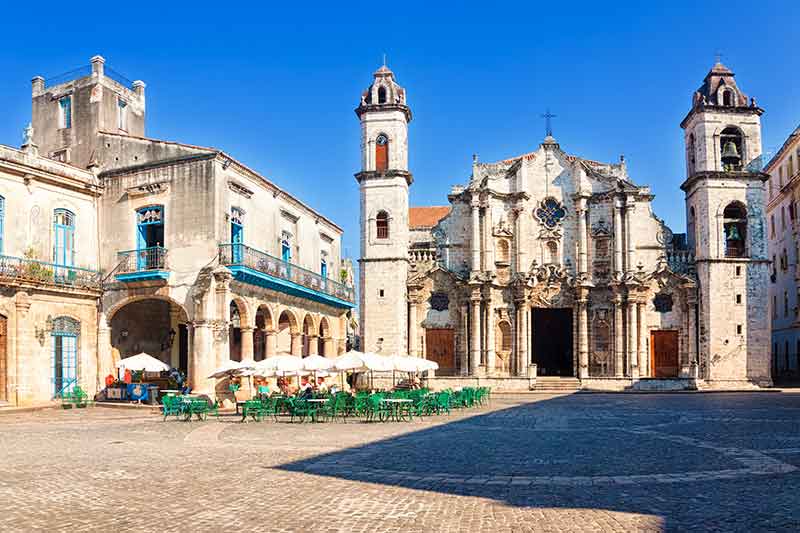
The Cathedral of Havana is an eye-catching Cuban landmark in Cathedral Square in the centre of Havana.
It was built between 1748 and 1777 and is a must-visit historic landmark in the capital.
The cathedral was originally built as a Jesuit church to replace a smaller church on the same site.
It became a cathedral in 1787.
Unusually, the cathedral was constructed from coral stone, which has resulted in fossils of marine creatures from thousands of years ago forming key features of the building.
Climb the bell tower for spectacular views across the city and the bay.
19- Cueva de los Niños
Cueva de los Niños was discovered in 1941 by Dr Rene Herrera Fritot, an anthropology professor from the University of Havana.
The cave was a significant find in Cuban history.
Within the cave were the bodies of 13 aboriginal children no older than 10 years old.
With their bodies, a trove of polished stones and daggers were found.
Fossilised bones were also found in the cave, including a crocodile species that is now extinct, and the Megalocunus rodens, which is a type of sloth.
20- Castillo de la Real Fuerza
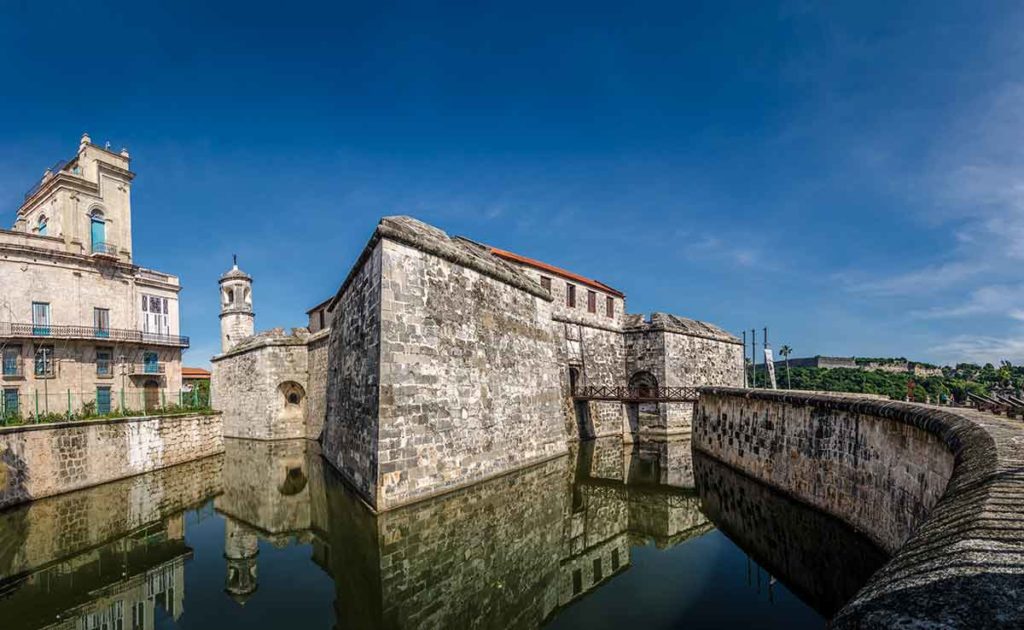
Castillo de la Real Fuerza is one of the oldest buildings in the Americas and dates from 1558.
The castle was constructed on the site of another fortress which was destroyed in 1555 by the French.
Havana’s first point of defence, the castle boasted a grand moat in the shape of a four-leaf clover.
Today the castle houses the Museo de Navegación which explores the history of Havana and the fort.
Within the museum is a model of the Santíssima Trinidad galleon.
The castle was listed as a UNESCO World Heritage Site in 1982.
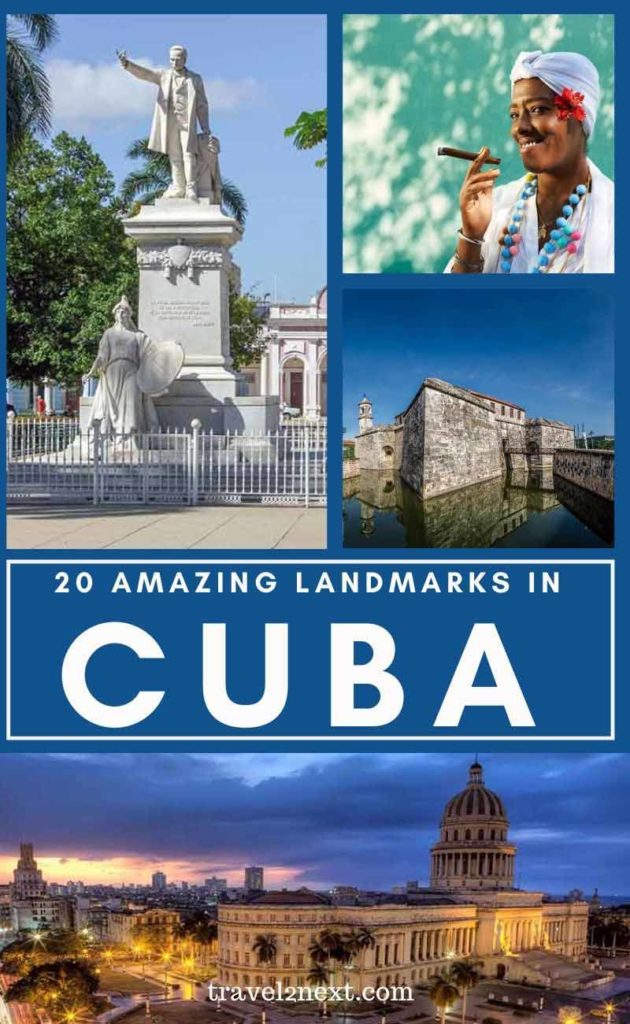
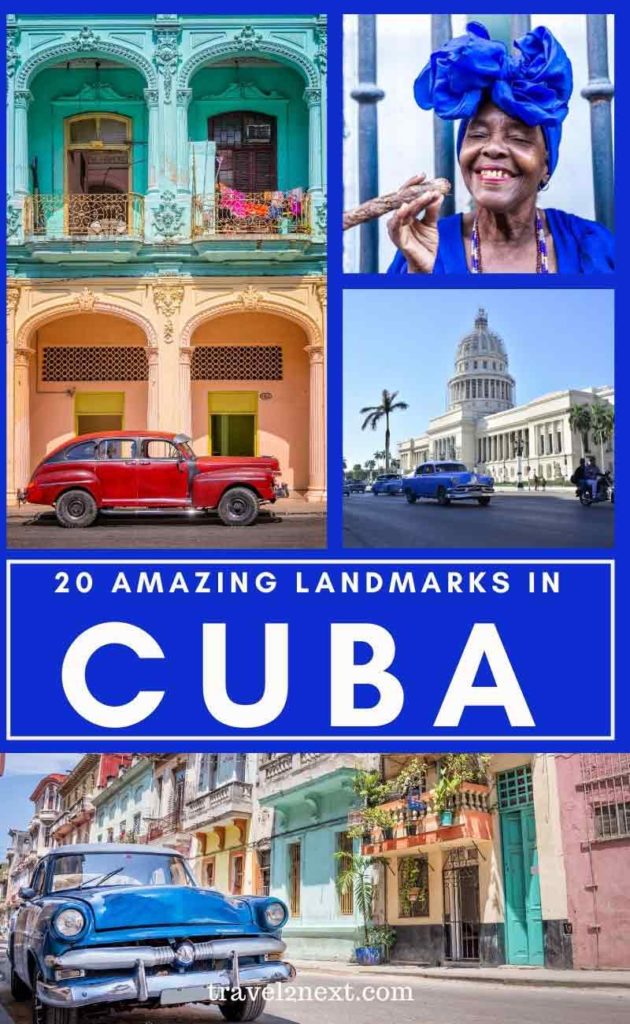
Plan Your Trip

Rent A Car – Find the best car rental rates at Discover Cars. They compare car hire companies to provide you with the best deal right now.

Find A Hotel – If you’re curious about this article and are looking for somewhere to stay, take a look at these amazing hotels.

